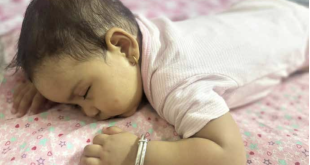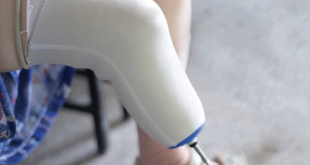Our spinal cord travels through a canal in the middle of the vertebrae that make up our spine. Each vertebra has a small disc or cushion in between them, which serves as a shock absorber in our spine. From the spinal cord, nerve roots separate and travel between the vertebrae to various parts of our body. Disc herniation is the term used to describe the symptoms that occur when these nerve roots are injured or pinched. Lumbar disc herniation is one of the most common spinal diseases that can lead to mild to severe pain in the lower back region.
Prevalence
According to studies, between 2-3% of the population may be afflicted, with prevalence rates of 4.8% among men and 2.5% among women over the age of 35. Smoking, prolonged exposure to repetitive loads, bad postures, and vibration exposure has been linked to a higher risk for lumbar disc herniation.
Causes and risk factors
Lumbar disc herniation is most commonly caused by disc degeneration, a slow aging-related wear and tear. Most of the time, it is difficult to pinpoint the cause of the herniated disc. Twisting and turning while lifting can sometimes result in a herniated disc, as we use the back muscles to raise heavy objects rather than the leg and thigh muscles. Rarely is the cause a traumatic incident like a fall or a knock to the back.
• Having excess body weight ( BMI more than 25 ) can increase the risk of herniated disc.
• Long periods of repetitive lifting, tugging, pushing, bending laterally, twisting, and sitting can increase the chance of a ruptured disc.
• Some people are genetically predisposed to suffering a herniated disc leading to increased possibility of herniation.
• Smoking might limit oxygen supply to the discs and cause them to breakdown faster.
Pathophysiology
The bulging nucleus pulposus (center part of the disc) and the localized increase in inflammatory chemokines are thought to be the pathophysiology of herniated discs.
Sign and symptoms
Symptoms depend on the severity and level of nerve root compression; mainly, people complain of pain in the low back region that gradually radiates into the back of the thigh and leg along with burning sensations. In many cases, pain is felt on one side, but sometimes in both legs. Mild numbness and tingling sensations at the back of the affected thigh and parts of the legs are common.
Treatment
Oral medication to reduce pain and inflammation is prescribed by doctors, along with physical therapy management; rarely, surgery is done if conservative management fails to recover, or the condition is severe and complicated.
Physiotherapy management
Various effective back exercises, electrotherapy modalities, lumbar traction, and back school program are widely practice methods for speedier recovery.
Facts that people should be aware of about this condition:
1. It is the condition where our spinal nerve gets compressed, and irritation to the nerve leads to pain and burning sensation in the low back region and in one or both legs.
2. Medical history, along with MRI, is used to identify the level and severity of disc herniation.
3. The most common region/level of lumbar disc herniation is at L4-L5 and L5-S1.
4. Always maintain good posture, avoid heavy weight lifting activities and avoid too much of bed rest.
5. Forward bending push the disc further in the nerve; prone with elbow position (elbow support cobra position) is one of the best positions for faster recovery.
6. Slouching on the sofa, leaning forward on the computer table, picking up things from the floor by forward bending, and jerky spinal twisting movements are the very harmful movements and activities to do, because not only do these activities aggravate pain, but also harm the condition.
7. Apply cold immediately if it is due to any physical stress or traumatic cause. Whereas, heat plays significant role in reducing pain and improving healing if it is chronic.
8. Use lumbar support belt while doing regular activities and remove during sleeping.
9. Use back support cushion while sitting in chair in the office or while driving.
10. Do not drive off-road and do not sit on the back seats of the bus.
11. If there is surgical recommendation, then consult with a spinal surgeon.
12. Surgery is only done if physical therapy and oral medication fail.
 Medicosnext
Medicosnext




